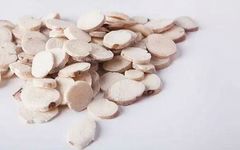To prevent losing this next time
Bai Shao (Paeonia lactiflora) is the root of the peony plant, belonging to the Ranunculaceae family. Bai Shao, also known as White Peony, is a traditional medicinal flower in China with a long history of cultivation and is renowned both domestically and internationally. Its root is used in medicine. Currently, wild varieties can still be found in areas such as the Qinling and Dabie Mountains. It is primarily produced in provinces such as Shandong, Anhui, Zhejiang, Sichuan, and Guizhou, with cultivation also in Northeast China, Hebei, Shanxi, Inner Mongolia, and Shaanxi. Bai Shao can be categorized into three main types based on its production area: “Hang Shao” from Zhejiang, “Bo Shao” from Anhui, and “Chuan Shao” from Sichuan.
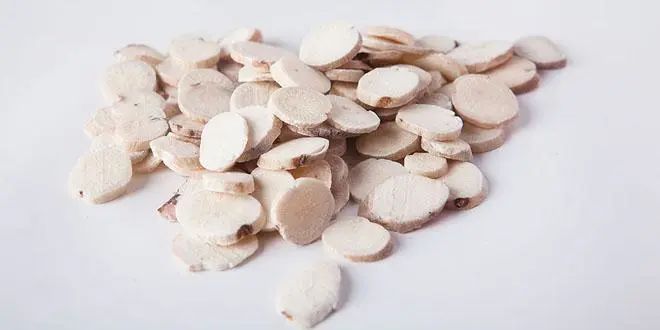
Population Suitability for Bai Shao
Contraindicated Population: Those with deficiency-cold syndrome should not use it alone.
Suitable Population: Individuals with menstrual irregularities and dysmenorrhea.
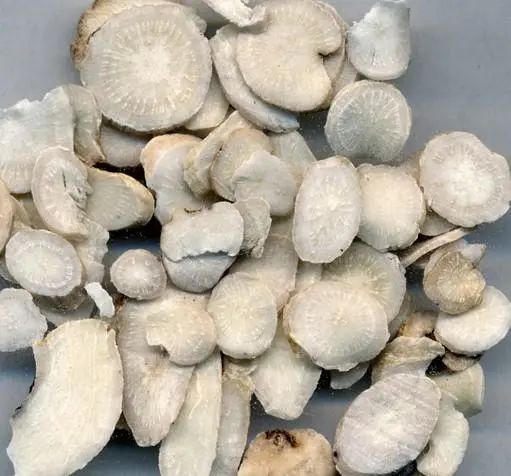
Effects and Functions of Bai Shao
Bitter, sour, slightly cold. Enters the Liver meridian. Nourishes blood, astringes yin, softens the liver, alleviates pain, and pacifies liver yang.
1. Used for menstrual irregularities, abdominal pain during menstruation, metrorrhagia, as well as spontaneous sweating and night sweats.
Bai Shao nourishes blood and astringes yin, treating gynecological disorders, often combined with Dang Gui (Angelica sinensis), Shu Di Huang (Rehmannia glutinosa), and Chuan Xiong (Ligusticum chuanxiong). When used with Gui Zhi (Cinnamon Twig), it can harmonize Ying and Wei, treating exterior wind-cold and spontaneous sweating due to deficiency; when combined with Long Gu (Dragon Bone), Mu Li (Oyster Shell), and Fu Xiao Mai (Elymus), it can astringe yin and subdue yang, treating spontaneous sweating and night sweats caused by yin deficiency and yang floating.
2. Used for hypochondriac pain, abdominal pain, and pain in the hands and feet due to liver qi stagnation.
Bai Shao functions to nourish blood and soften the liver, alleviating pain, thus it can be used for chest and hypochondriac pain, abdominal pain, and spasms in the hands and feet caused by liver qi stagnation. For hypochondriac pain, it is often used with Chai Hu (Bupleurum) and Zhi Ke (Bitter Orange); for abdominal pain and spasms in the hands and feet, it is often combined with Gan Cao (Licorice); for dysentery-related abdominal pain, it can be used with Huang Lian (Coptis) and Mu Xiang (Aucklandia).
3. Used for headaches and dizziness caused by excessive liver yang.
Raw Bai Shao can astringe yin and pacify liver yang, thus it can be used for headaches and dizziness due to excessive liver yang, often combined with Sang Ye (Mulberry Leaf), Ju Hua (Chrysanthemum), Gou Teng (Uncaria), and Bai Ji Li (Tribulus terrestris).
4. Beauty and blood nourishment.
In TCM theory, Bai Shao has the effect of nourishing blood, which can treat sallow complexion, facial spots, and lack of luster.
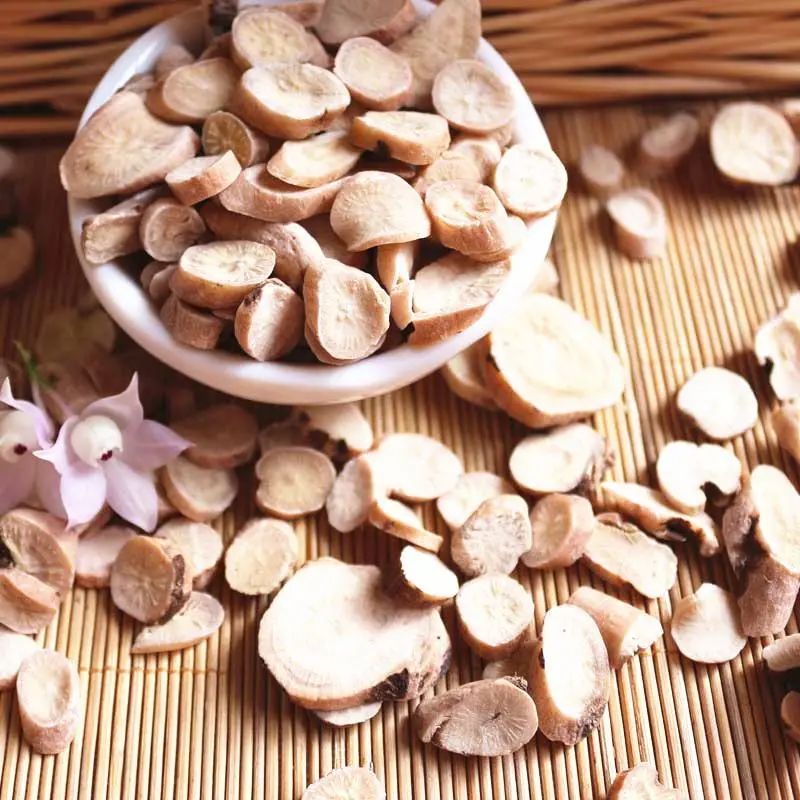
Selection of Bai Shao
The dried root is cylindrical, uniform in thickness, straight, 10-20 cm long, and 1-1.8 cm in diameter. The surface is light reddish-brown or pale white, flat, or has obvious longitudinal wrinkles and root scars. Where the cork is not completely removed, there are brownish spots, and transverse pores may occasionally be seen. The texture is solid and heavy, not easily broken. The cross-section is grayish-white or slightly brown, with radiating wood fibers resembling a chrysanthemum heart. It has no odor and a slightly bitter and sour taste. The best quality is characterized by a thick, long, uniform, solid root with sufficient powdery texture and a clean surface.
Roots that are thin, bent, uneven in size, with many cork and root scars, loose texture, small powdery texture, and indistinct radiating fibers are of inferior quality.
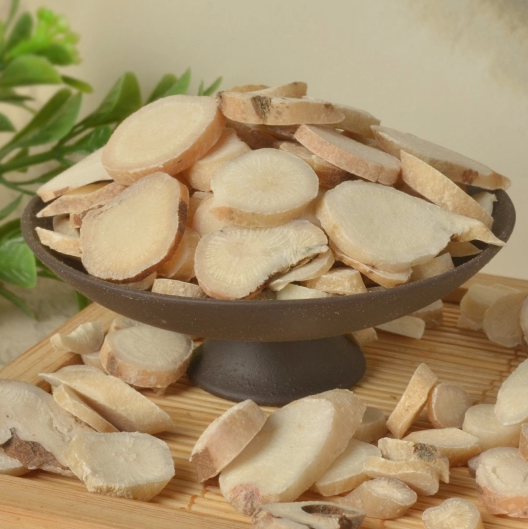
Storage of Bai Shao
Store in a cool, dry place, sealed, and protected from pests.
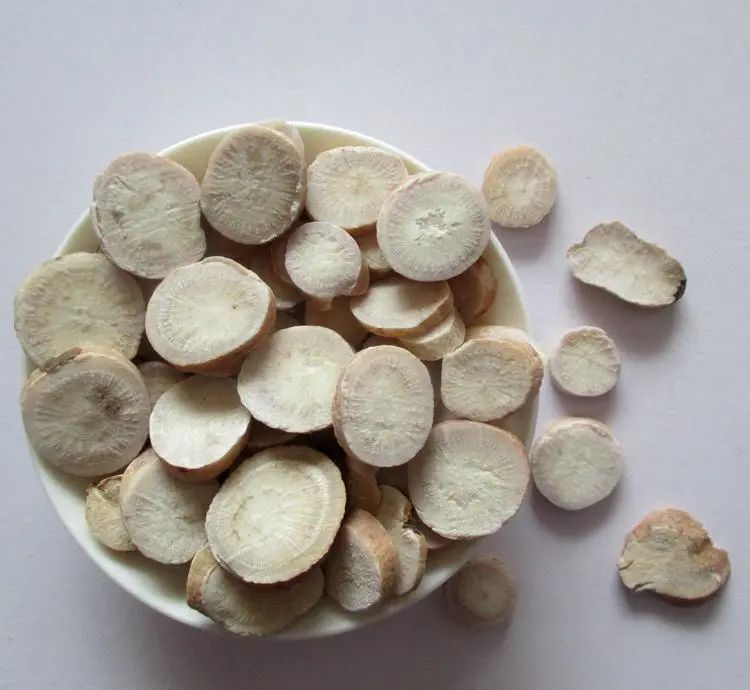
Consumption Methods of Bai Shao
Bai Shao can produce different effects through various processing methods. Raw Bai Shao has a strong astringent effect on yin and pacifies the liver; fried Bai Shao is better for nourishing blood and the liver, often used for those with liver excess and spleen deficiency causing pain and diarrhea; Bai Shao fried with wine is best for nourishing blood and invigorating blood circulation, particularly suitable for blood deficiency with cold and blood stasis; Bai Shao fried with vinegar enhances its ability to soften the liver and alleviate pain.
If you find this useful,  remember to follow!
remember to follow!
Editor shares good articles with friends
1. 6 inexpensive and effective medicines from pharmacies that staff generally won’t recommend, worth noting
2.Pharmacopoeia: 3 types of Chinese herbs have been banned! They have nephrotoxicity and carcinogenic properties, don’t assume they are good medicines
3. What are the benefits of black goji berries? How to eat them for the best effect? Nutrition experts provide the answers
4. What are the benefits of peaches? Can they be eaten in large quantities?
Like is a form of encouragement Share to spread joy
After reading, please click “Looking”

